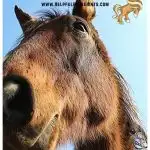As a heavier person, I can appreciate the dilemma. You know you are heavy but you want to ride. Whether you are a fit 250 or a fat 250, the issue is the same. You need a horse that is properly sized for your weight. The fact of the matter is a persons love for horses doesn’t decrease s their weight increases. If you loved riding horses at 175, you still love riding horses at 275 or even 350.
So how do heavier riders find a horse that can comfortably carry them but still be an enjoyable ride? Luckily, there are many breeds of horses that are naturally heavier and can easily accommodate larger riders.
While this post is aimed to give you some specific breeds that should be easily able to accommodate large riders, be sure to refer to my much more detailed post about choosing the right sized horse for your height and weight for a more detailed answer and chart.
I also highly recommend you check out the book, Fit & Focused in 52 no matter your weight. It is a weekly mind-and-body training companion for equestrians.
Let’s look at some breeds that are great choices for riders over 250 lbs.
Table of Contents
1. Friesian Horse
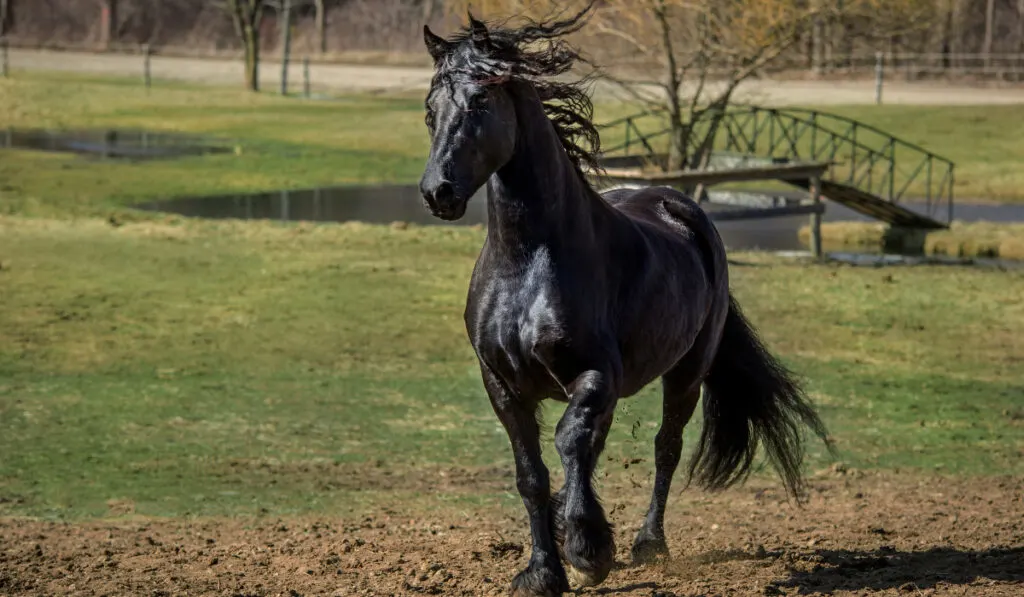
While most articles of this type may start out with “draft” type horses (and we will cover them), there are some very nice lighter horses that can be big enough for heavier riders. The Friesian horse is one of them.
This breed can be a great choice if you love dressage or one heck of a nice looking trail horse. The choice is yours. In fact, the Friesian horse is very versatile and you may find the breed nicely suited to whatever equestrian sport you enjoy most.
The Friesian horse typically weighs between 1300 and 1500 pounds and most members of the breed will easily accommodate a combined saddle and rider weight of 260+ pounds.
2. Belgian Horse
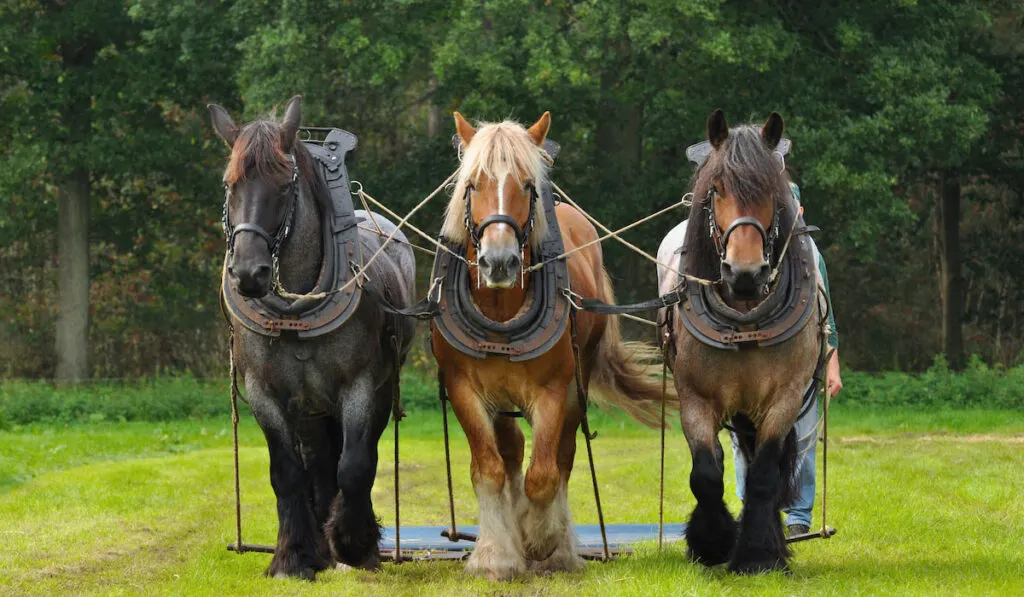
I actually worked with a Belgian that was owned by a friend. He was an absolutely excellent trail horse. Easy to handle and easy to ride.
Funny enough, she didn’t weigh more than 125 lbs but, still, he was awesome and great for even beginner riders to take out on the trail.
Big Jake, the 2010 Guinness World Record title holder for the world’s tallest living horse is a Belgian. The Wisconsin resident was measured at 20 hands high! (source)
The Belgian is a draft horse breed typically weighs in at over 2,000 lbs. Using a 20% value that means that the Belgian horse should be able to accommodate a combined rider and saddle weight of at least 400 lbs.
3. Clydesdale Horse
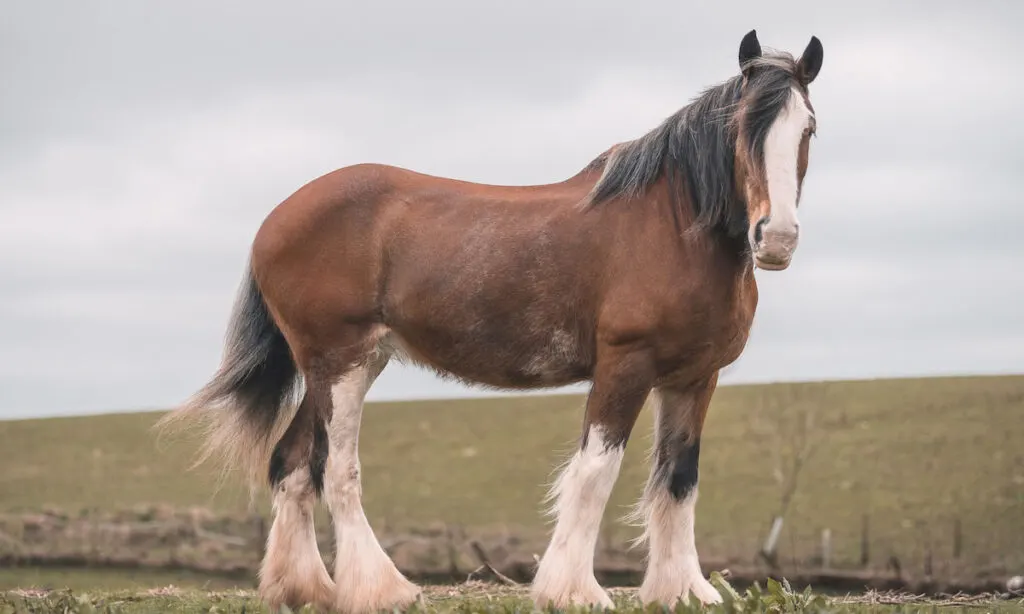
The Clydesdale is one breed of horse that is almost always recognized by just about every American citizen.
Made popular by the Budweiser company, this gentle giant is known for commercials in which it pulls carriages but did you know that they make excellent riding horses as well?
It is possible to buy Clydesdales from the Budweiser breeding program, but there are also private breeders as well that sell riding prospects. the only disadvantage to a horse like a Clydesdale for general riding is their long feathers.
While beautiful to look at, they can be a pain to maintain. When used for general riding, some Clydesdale owners will opt to shave the legs.
The Clydesdale horse typically weighs at least 1,800 lbs and is typically at least 16 hands tall or taller. Even at the low end, any adult Clydesdale should easily be able to handle a rider and saddle combo of 360 – 400 lbs.
4. Shire Horse
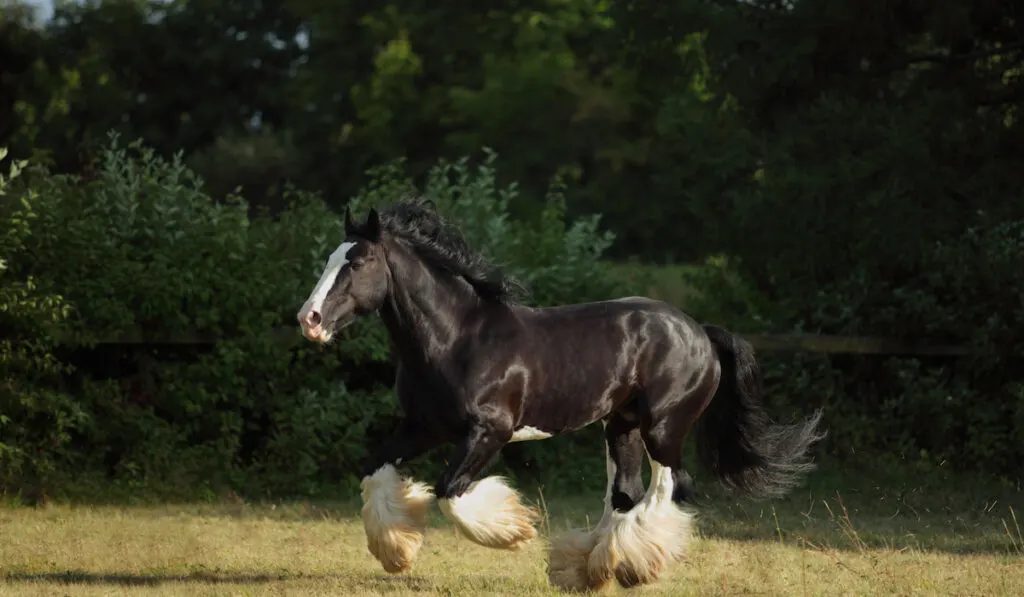
This is another draft breed but, if your family loves Warmbloods and jumping horses, why not get a shire for the larger riders in the family.
If you get a mare, you can easily cross her with a variety of different breeds to make excellent jumping horses. Shire crosses are often seen at the upper levels of show jumping and dressage arenas.
Sampson, a Shire gelding, has held the Guinness World Record for the tallest horse ever since 1850. He measured 21 hands 2.5 inches. Can you imagine! That means that, at the wither, he was over 7 foot tall! (source)
The Shire horse typically weighs at least 1100 pounds and they can get very, very tall. As far as weight goes, Sampson, the world record holder, was 3360 lbs!
That means that this Shire horse, Sampson, could easily accommodate a combined rider and saddle weight of a whopping 672 pounds.

5. Mustang
Here is another light horse breed you may not have thought of. Some mustangs are actually very tall and wide and can accommodate a larger rider easily. I personally trained a mare that was 15.2 but built like a brick house. While I didn’t have a scale to weigh her, I have no doubt she weighs at least 1500 lbs.
I will say that taller, wider mustangs seem to be harder to find but, it is possible. My own mare is a beautiful 16.1 hand palomino paint with a very nice build.
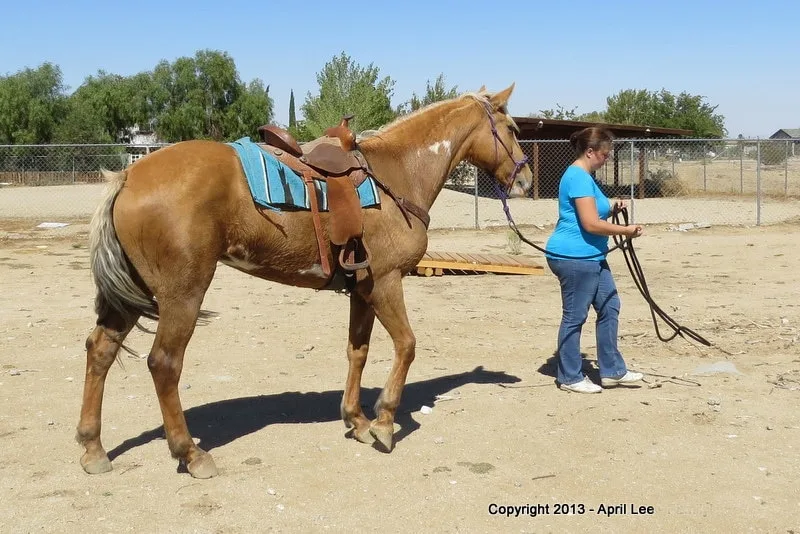
What is great about the mustang is that you can adopt them wild from the BLM (and there is even a $1,000 incentive to do so) or you can adopt them trained from various programs including the Mustang Makeover or the Prison training programs.
Mustang horses can range between 12 hands and 16.3 and have a wide variety of weights. Because this breed isn’t a pedigreed breed, size and build varies widely. Check out your nearest BLM facility and you may find that they have a horse perfect for you.
A 250 lb rider with a 40 lb saddle would need to find a mustang that weighs around 1400 lbs.
6. Suffolk Punch
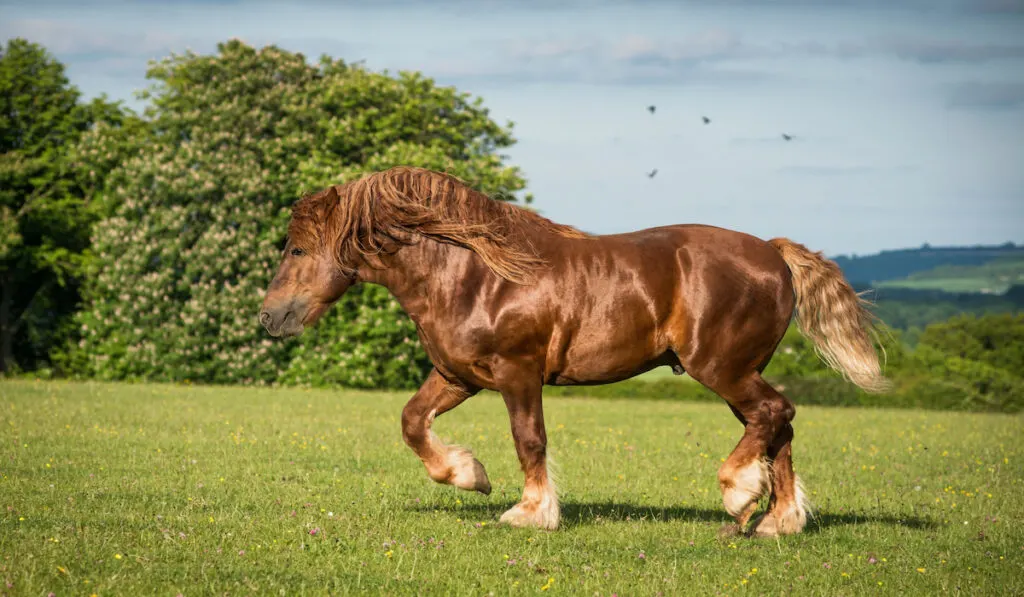
This is one you don’t hear about much when compared to some of the other draft breeds listed above but, the Suffolk Punch is another great draft breed well suited for heavy riders.
Known for their beautiful red color and size and strength, this breed of horse originates from Suffolk, England. They were developed, as were most draft breeds, to pull heavy farm equipment but they make excellent riding animals as well. (source)
They are so popular, in fact, that they are one of the few breeds included in the video game, Red Dead Redemption 2.
The Suffolk Punch horse is usually between 16 and 17 hands tall with a weight of 2,000 – 2,200 lbs. This means the Suffolk Punch could easily carry a rider and saddle weight of 400+ pounds.
7. Quarter Horse
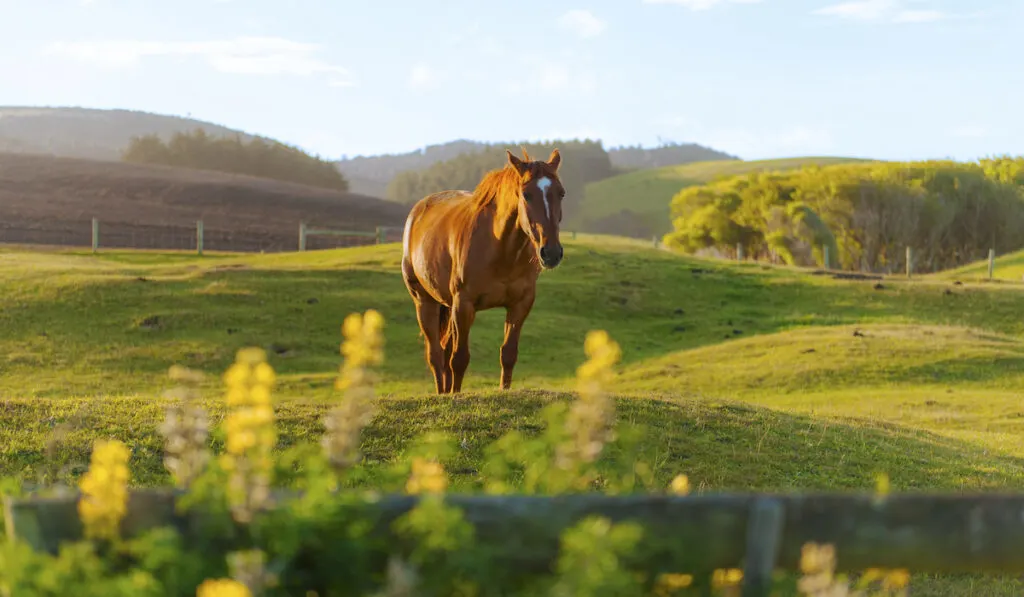
Here is a popular light horse breed that can accommodate heavier riders. Some lines of quarter horses are the “bulldog” type. These heavily muscled ranch horses can be 15 – 16 hands or taller and have the muscle and mass that makes them a great option for a larger rider.
As a larger woman who is also tall, 5’8” and 275 lbs at present, there are definitely a few types of quarter horses I feel very comfortable.
My favorite horse at a friends ranch was, for the longest time, a bay roan Hancock mare. standing 16.2, this mare was tall and unbelievably wide. She was also one heck of a great ride. I still regret not having the funds to buy her when my friend was selling her.
In fact, if you pay attention to western competitions like roping and steer wrestling, you will typically find more men that are larger in stature competing just fine on the Quarter Horses and Appendix Quarter Horses that carry them.
Quarter Horses typically range from 14 hands to 17 hands with taller (and shorter) members of the breed as well. Weight is typically 950 – 1500 lbs, with again, lighter and heavier horses being possible. A 1500 lb Quarter horse should be able to easily accommodate a combined rider and saddle weight of 300 lbs.
8. Paint Horse
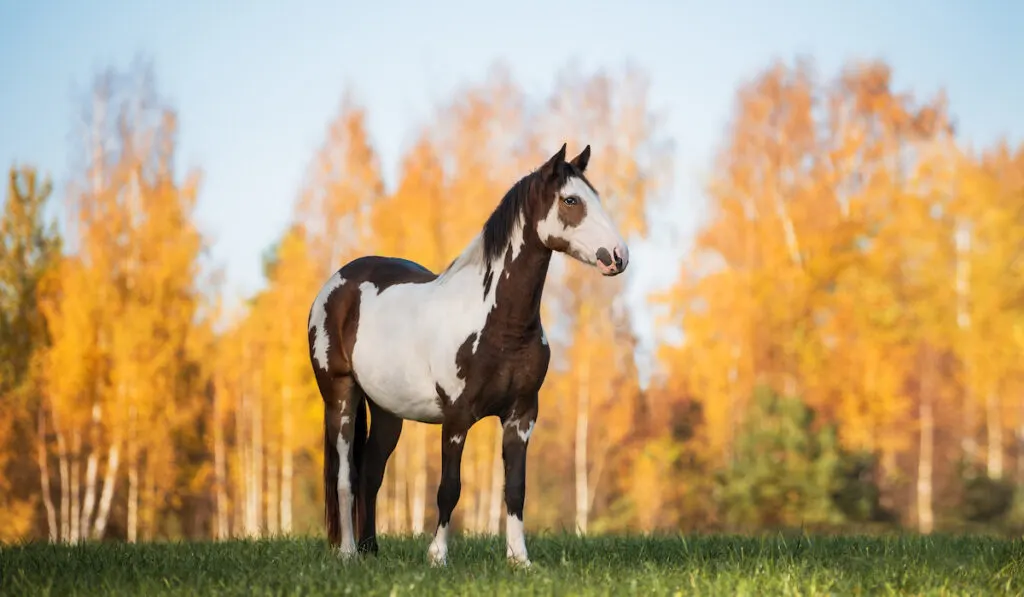
Just as with Quarter Horses, it is possible to find larger and wider American Paint Horses. They have the added benefit of coming in a wide variety of colors and patterns.
When the Quarter Horse registry was being formed, paint horses and those with white markings that were too high were excluded. The other characteristics, though, were largely the same.
The horses chosen as the founding members for the American Paint Horse breed were stock horses capable of carrying a cowboy on the ranch for hours a day.
The horse needed to be able to do whatever asked including hold a steer, gather cattle and check miles of fenceline. Because of the similarities in type, the APHA registers breedings between registered Paint Horses and registered Quarter Horses.
Thus, the size and weight ranges of this breed is the same as with the Quarter Horse. American Paint Horses are typically between 14 and 17 hands tall and weigh between 950 – 1500 pounds. The larger representatives of the breed should be able to easily accommodate a combined rider and saddle weight of 300+ lbs.
9. Warmbloods
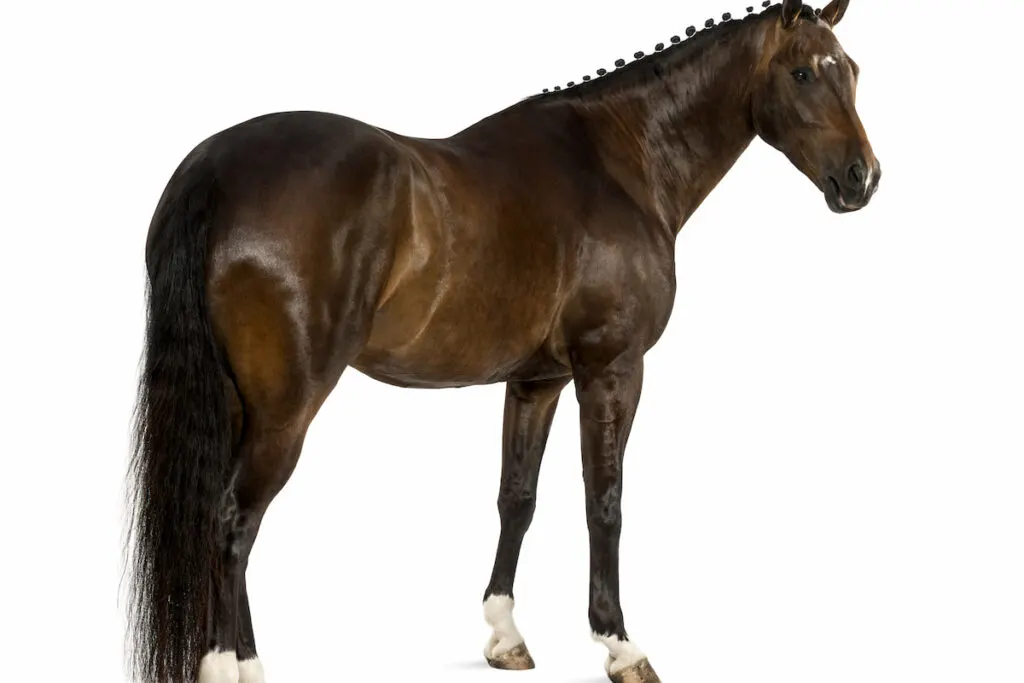
While most breeds of horses are technically “Warmbloods”, what I am specifically referring to here are the common Warmblood breeds you might see in the show jumping or dressage arenas.
These horses are typically tall, large-boned and most are definitely suited for the larger riders. Easily reaching between 16 and 17 hands or taller, these giants of the horse world are a great option for larger riders.
Think about it, not every warmblood horse bred is suitable for jumping or dressage. That means, even if you just want to ride trail or chase after some cows, you may be able to find a warmblood on “discount” for that purpose.
While high performing members of the various breeds sell for hundreds of thousands of dollars, I personally have owned a few in the more reasonable $1,500 to $3,000 price range that made excellent low-level English show horses or just nice horses to pop down the trail on.
What you are looking for, in this case, is a horse with the right size and muscle tone to carry a larger rider.
Warmblood horses can easily weigh 1,500 lbs or more depending on the specific breed, height and muscle mass of the horse.
This means that a warmblood horse could potentially carry a rider and saddle combination of 300 pounds or more.
10. Andalusian
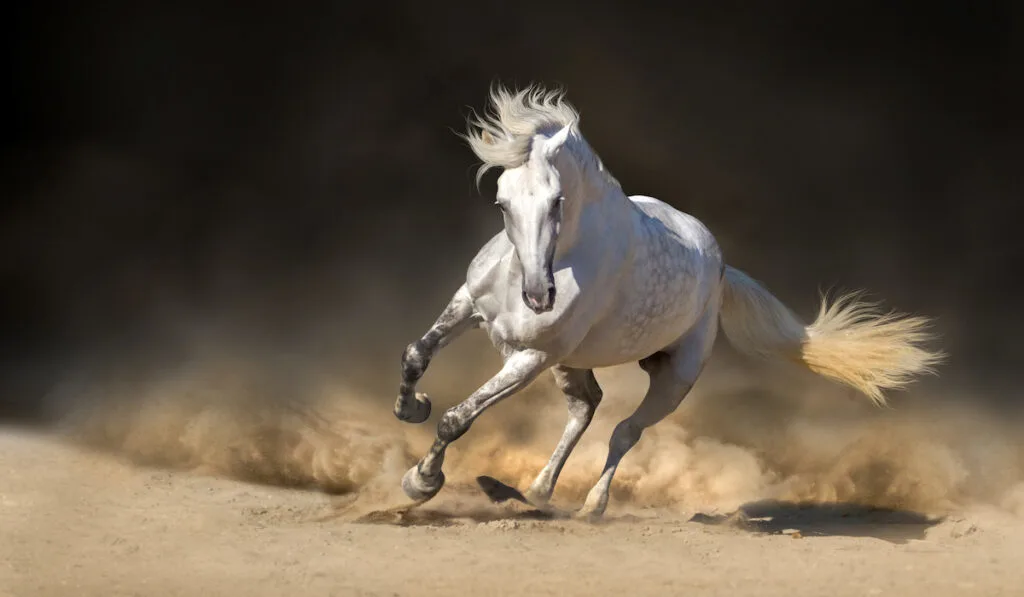
The Andalusian horse is very popular in many countries due to their beautiful, Spanish look and their versatility. This breed comes in a wide variety of colors and is known for horses with muscular, compact bodies.
Originally bred for battle, the Andalusian horse had to be able to carry a knight with all of his gear but yet still be agile and quick on his feet in battle when needed.
Andalusian horses are usually at least 15 hands tall and at least 1200 lbs which means that larger members of the breed are excellent for heavier riders.
A 1,500 lb Andalusian horse would be able to easily carry a combined rider and saddle weight of 300 lbs.
11. Mules
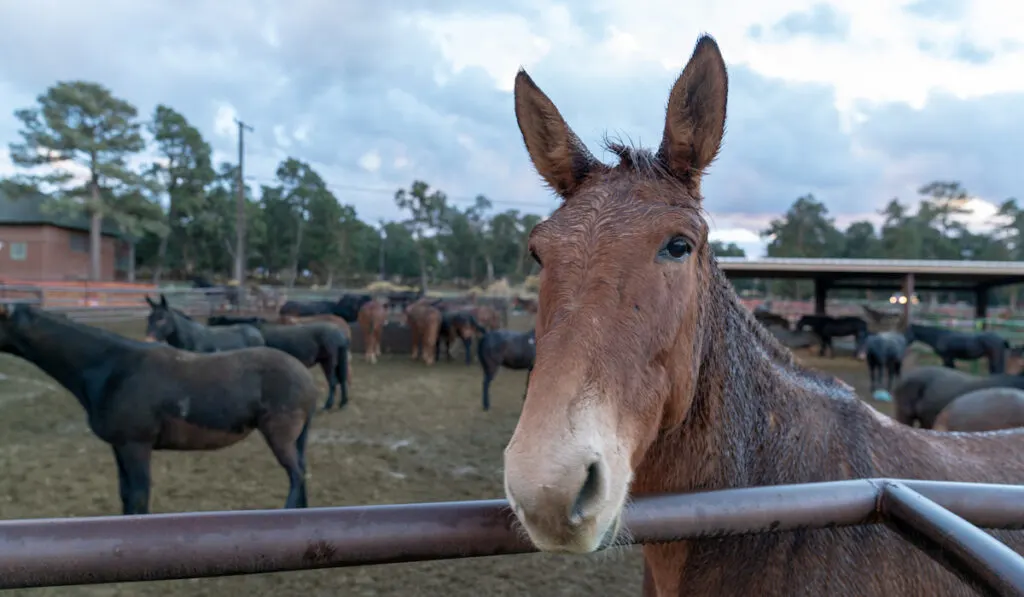
Mules are another, often overlooked “breed” of horse that can be great for heavy riders. OK, I do know that they aren’t a breed of horse or even a horse at all.
The truth is, depending on the size of the Jack and the size of the mare, some mules can actually be quite large. In addition, their hybrid vigor makes them fairly long-lived and their intelligence makes them suited to a wide variety of disciplines.
The current world record mammoth donkey is 17 hands tall and lives with his owner in Texas. (source) Since mammoth donkeys can get quite large, their resulting mule foals can be quite large as well, depending on the size of a mare.
Draft mules, like the one pictured above, are not altogether uncommon. The reality is, you could cross a donkey with any of a number of breeds of horse to get the size and color horse you desire.
Draft mules, and mules produced by breeding mammoth jacks to large mares could easily reach 17 – 18 hands and weigh over 2,000 pounds. This means that, depending on the actual weight of the mule, a draft mule could easily carry a rider and saddle with a combined weight of 400 lbs and possibly more.
Final Thoughts
Remember that the weight of the horse is only a guideline for the estimated weight a horse could carry. There are a variety of factors involved including fitness of the horse and conformation.
Rider experience also plays a big part. Think about how carrying “dead weight” like a 50lb sack of flour, differs from carrying a 50lb child, for example.
Beginner riders are harder for horses to carry and experienced riders have the balance and self-awareness that makes carrying them much easier for a horse.
This is why you may sometimes see a horse doing just fine with a rider that looks a little too large based on the rider weight to horse weight recommendations. Ultimately, it is our duty to be aware of the recommended guidelines but also to treat each horse and rider combo as an individual pair instead of relying solely on a weight to weight ratio.

